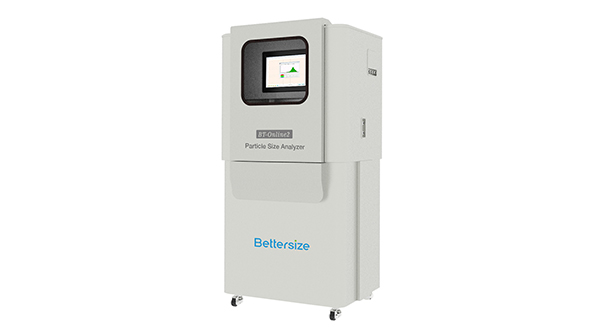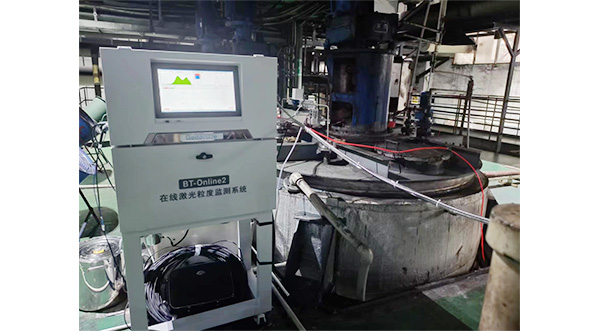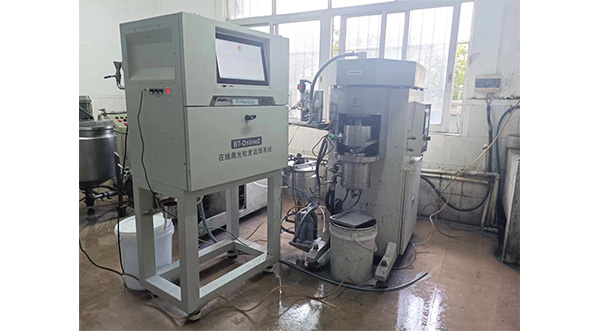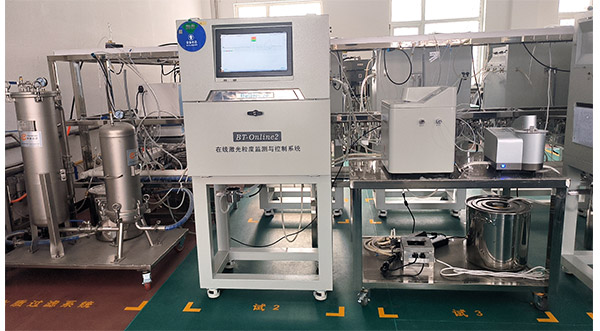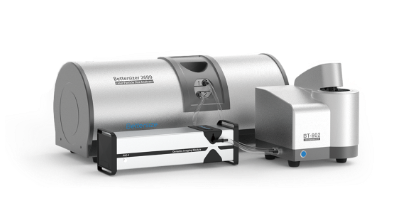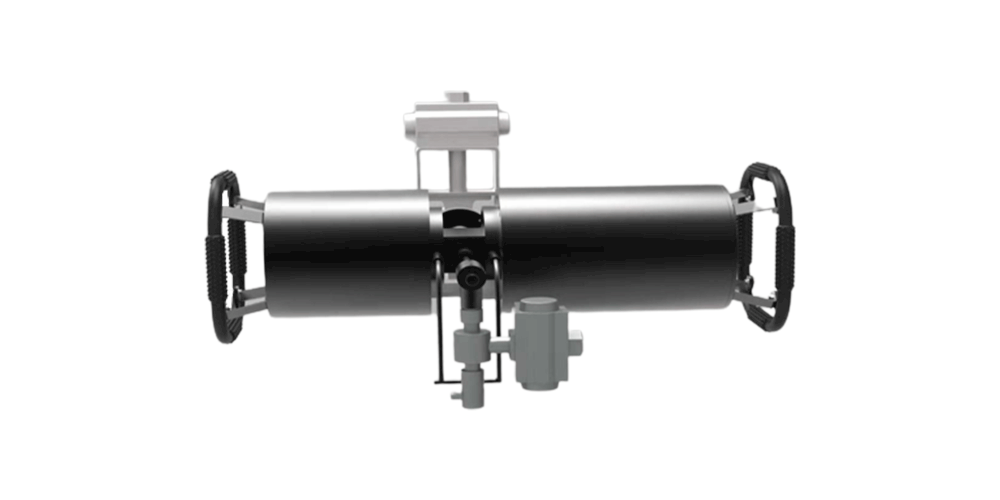BT-Online2
El BT-Online2 aplica el sistema óptico patentado Fourier y Fourier inverso, que proporciona resultados de medición fiables con el mismo nivel de precisión que el instrumento de laboratorio. Un total de 92 detectores están dispuestos con precisión en la configuración óptica que es responsable del análisis preciso del tamaño de partícula que va desde 0,02 a 2000μm utilizando el método húmedo. Con el sistema de dilución externa, el BT-Online2 puede manejar muestras con alto contenido en sólidos, ampliando enormemente sus áreas de aplicación. Se pueden acoplar hasta 4 líneas de proceso al BT-Online2, lo que ahorra su inversión, mejora la eficiencia de su espacio y simplifica la gestión de datos.
Características y ventajas
- ● La configuración óptica patentada favorece la precisión de las mediciones
- ● Sistema de muestreo neumático fiable
- ● Supervisión de hasta 4 líneas de proceso
- ● El sistema de dilución externa consigue un oscurecimiento óptimo
- ● Misma precisión de medición que el instrumento de laboratorio
- ● El sistema de filtración permite reciclar el disolvente orgánico
Visión general
BT-Online2-Solución innovadora para la medición en línea por vía húmeda
El BT-Online1 se utiliza como analizador de tamaño de partículas en línea para partículas secas dentro del rango de tamaño de 0,1 a 1000 μm. El BT-Online1 se integra en un bucle de proceso, proporcionando resultados de medición en tiempo real que ayudan en la inspección de calidad y la supervisión de parámetros.
La configuración óptica patentada favorece la precisión de la medición
El sistema óptico patentado de Fourier y Fourier inverso proporcionado por Bettersize Instruments contiene detectores delanteros, laterales y traseros, realizando la detección de señales de luz dispersa en un rango angular muy amplio.
Ventajas de la configuración óptica:
- La célula de muestra inclinada alivia la reflexión interna total.
- Amplía el rango de medición
- Mejora la precisión de la medición de partículas pequeñas.
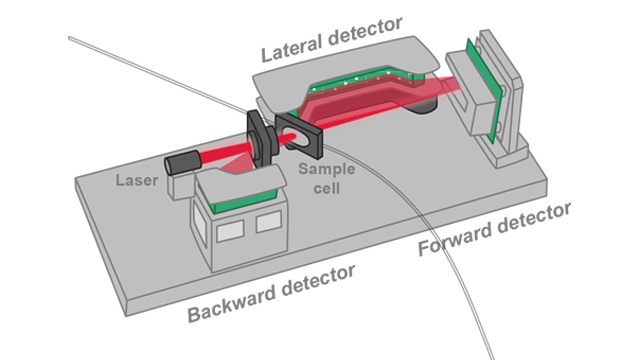
Sistema de muestreo neumático fiable
Este diseño permite:
- Extracción eficaz de la muestra sin contaminación cruzada
- Buena seguridad de funcionamiento sin utilizar electricidad
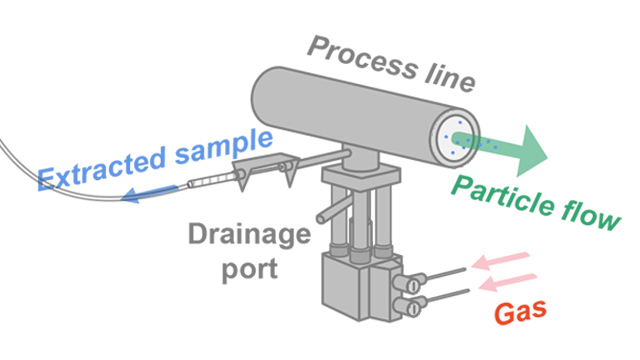
Conseguir un oscurecimiento óptimo mediante dilución externa
En la mayoría de los casos, el contenido en sólidos de las muestras es bastante elevado, lo que provoca un alto oscurecimiento cuando las muestras se introducen en el BT-Online2. Por lo tanto, es necesario un sistema de dilución externo para la dilución primaria.

Alineación con el instrumento de laboratorio
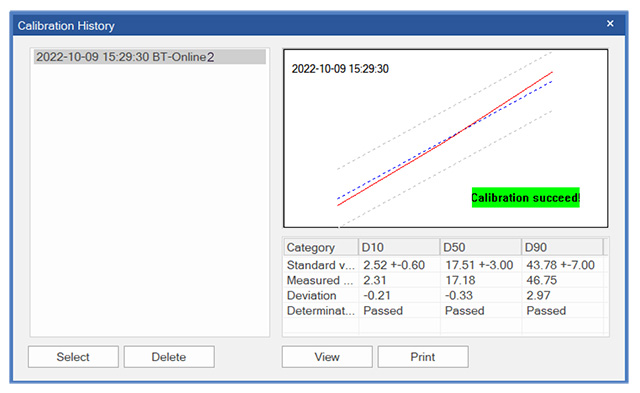
Mediante la verificación del funcionamiento, el valor medido proporcionado por el BT-Online2 coincide con el valor nominal del patrón de referencia de trabajo.
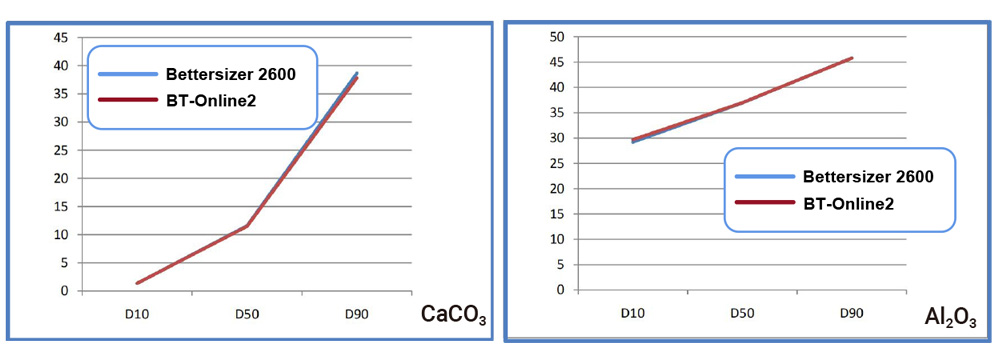
Las desviaciones de los resultados entre el BT-Online2 y el instrumento de laboratorio son bastante pequeñas: las curvas granulométricas casi se solapan entre sí.
El sistema de filtración permite reciclar el disolvente orgánico
Cuando se aplica disolvente orgánico como portador en lugar de agua, se dispone de un sistema de filtración móvil que trabaja mano a mano con la BT-Online2 para reciclar el disolvente orgánico, lo que ahorra su inversión.
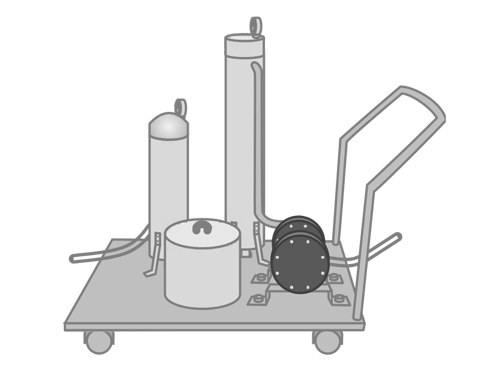
Supervisión de hasta 4 líneas de proceso
Se pueden conectar hasta 4 líneas de proceso a la BT-Online2 con SOP individuales. El resultado de la medición de cada línea de proceso se muestra de forma intuitiva en el software, lo que ahorra inversión en equipos y simplifica la gestión de datos.
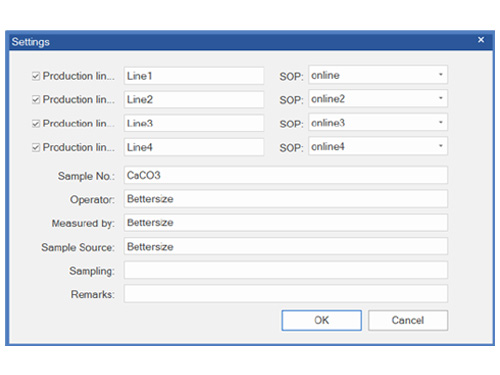
Aplicación
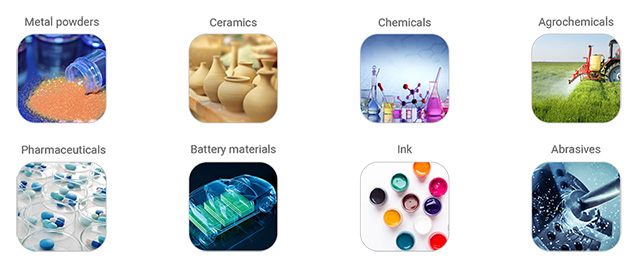
- Medición continua y precisa en diversas industrias
Un sistema óptico patentado ofrece resultados de medición precisos con una reproducibilidad extraordinaria.


- Procedimiento de medición de la BT-Online2 con un sistema de dilución externo
Como accesorio, se puede conectar un sistema de dilución externo a la BT-Online2, que ofrece una solución para medir muestras concentradas en caso de dispersión múltiple. El sistema de dilución externo tiene 4 puertos de entrada que corresponden a 4 líneas de proceso y 1 puerto de salida para entregar la muestra diluida primaria.

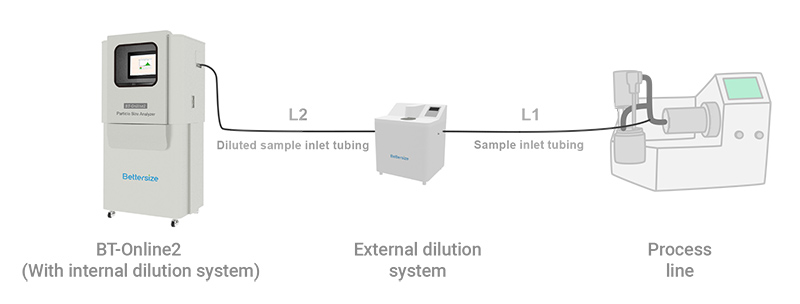
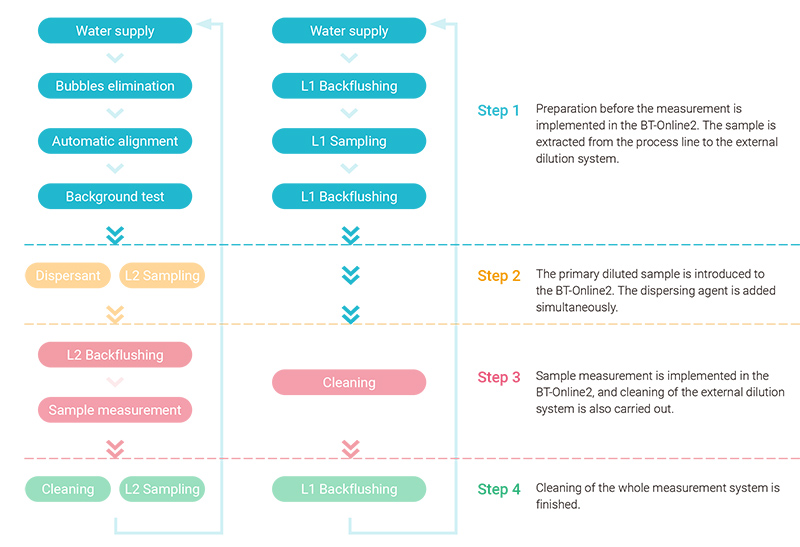
Citations
- Bettersizer 2600
Functional redundancy as an indicator for evaluating functional diversity of macrobenthos under the mussel raft farm near Gouqi Island
DOI: 10.1016/j.aquaculture.2023.740024 Read ArticleZhejiang Ocean University | 2024Biological traits analysis (BTA) helps to evaluate the effects of different environmental variables on the traits-based functional composition of macrobenthos. However, research on functional traits of macrobenthos under mussel farming is limited. We investigated the spatial and temporal response of the benthic system in terms of taxonomic and functional diversity to environmental variables of farming and natural stressors resulting from suspended mussel farming near Gouqi Island of eastern China Sea. The functional traits of macrobenthic assemblages under mussel farming were characterized by “medium adult body size”, “vermiform body form”, “high flexibility”, “infauna”, “semi-motile”, “gonochoristic”, “surface deposit-feeders”, “carnivores”, “semi-motile burrowers”, and “tube-dwellers”. Functional redundancy was stable in response to mussel farming stresses among seasons, whereas species diversity showed efficient to evaluate natural variables. Functional diversity was significantly affected by farming stressors rather than natural variables, Further analysis using multivariate methods together with continuous monitoring were highlighted to evaluate the impacts of mussel farming. Our results reinforce the importance of macrobenthic species and functional traits analysis to evaluate human stresses driven impacts in offshore ecosystems. By analysing the environmental variables with different sources, independently, we concluded the main effects of human pressures on macrobenthic community. Such distinction could be particularly effective to isolate variable environmental descriptors and evaluate their effects on functional diversity, making the current approach promising for the evaluation of ecological effects of anthropogenic stressors in aquaculture areas. - Bettersizer 2600
Degradation characteristics and utilization strategies of a covalent bonded resin-based solid amine during capturing CO2 from flue gas
DOI: 10.1016/j.seppur.2023.125621 Read ArticleChina University of Petroleum | 2024In this study, various types of degradation as well as attrition which are possibly encountered in a circulating fluidized bed temperature swing adsorption (CFB-TSA) process, were conducted experimentally to evaluate the stability of a resin-based solid amine sorbent. Other characterizations methods, such as elemental analysis (EA), Fourier transform infrared spectroscopy (FTIR) etc. were applied to further reveal the degradation mechanisms. The results showed that thermal degradation occurs from 140–160 °C due to the decomposition of amine group. The CO2-induced degradation occurs from a higher temperature of 160–180 °C accompanied by the production of urea. Hydrothermal stability is good below 130 °C, but the ionic impurities in steam crystalized on particle surface can accelerate the degradation. Oxidative degradation is the most harmful, which starts at a lower temperature of 70–80 °C with the formation of aldehyde. The existence of H2O in atmosphere can alleviate the oxidative and CO2-induced degradations. The employed sorbent has a very low attrition index of 0.05, which is 1–2 orders lower than typical commercial fluidized bed catalysts. Based on the results of stability evaluation, some design suggestions for proper utilization of this sorbent or other similar resin-based sorbents have been provided in an industrial CFB-TSA process.
- Bettersizer 2600
De-branching of starch molecules enhanced the complexation with chitosan and its potential utilization for delivering hydrophobic compounds
DOI: 10.1016/j.foodhyd.2023.109498 Read ArticleShihezi University | 2024The current study aimed to prepare the complexes between debranched-waxy corn starch and chitosan polymers (DBS-CS), and then investigated their corresponding structural characteristics, rheological property and potent application in Pickering emulsion. The results indicated that the existence of chitosan significantly inhibited starch short-range molecular rearrangement for all DBS-CS samples, which was manipulated by both debranching treatment and chitosan content. Interestingly, this is the first study to reveal that the outstanding peak at 1.8 ppm in 1H NMR spectrum for sample DBS-CS was gradually shifted towards a lower-field region following an increased chitosan content. Moreover, the debranching treatment shifted the crystallinity pattern from A-type to B-type and the relative crystallinity of DBS-CS decreased gradually with the increased content of CS. All samples had a pseudoplastic fluid and shear-thinning behavior with an enhanced shear resistance following the complexation. The DBS-CS was applied in a Pickering emulsion for showing a greater emulsifying stability and a lower gel strength than native NS-CS prepared emulsion. Importantly, the encapsulation ability of curcumin in the DBS-CS emulsion was significantly improved, followed by an increase of 15.45% for its corresponding bioavailability compared to the control. Therefore, this study might highlight a potential carrier for delivering the bioactive substances in a green pattern. - Bettersizer 2600
Heat-induced aggregation behavior of wheat gluten after adding citrus pectin with different esterification degree
DOI: 10.1016/j.foodhyd.2023.109420 Read ArticleGansu Agricultural University | 2024Wheat gluten aggregation during heat treatment is beneficial to the final quality of gluten-based products. Exogenous pectin can affect gluten aggregation. However, the effect of pectin with different degrees of esterification on the heat-induced aggregation behavior of gluten and its possible mechanism are still unclear. Thus, the heat-induced aggregation behavior of gluten after adding pectin with different esterification degree was studied in this study. When the temperature was raised from 25 °C to 95 °C, pectin affected gluten aggregation and was related to the degree of esterification. Specifically, the results of rheological properties and particle size indicated that low-ester pectin improved the viscoelasticity of gluten and promoted gluten aggregation. Thermal properties revealed that enthalpy of gluten added with low-ester pectin (37%) increased from 92.96 J/g to 95.40 J/g during heating process. Structurally, the fluorescence intensity and surface hydrophobicity of gluten added with low-ester pectin (37%) were lower than those added with high-ester pectin (73%). In addition, low-ester pectin (37%) significantly increased the disulfide bond content (from 15.31 μmol/g to 18.06 μmol/g) and maintained β-sheet content of gluten compared with gluten alone at 95 °C, indicating that low-ester pectin was more likely to induce gluten aggregation. However, scanning electron microscope showed that the gluten added with low-ester pectin (46%) exhibited a denser network structure at 95 °C than that added with low-ester pectin (37%). These results will provide a theoretical base for the regulation of gluten aggregation and the quality of gluten-based products by pectin with different esterification degree.
- 1
- 2
- 3
- 4
- 5
- 6
- 84
Recursos seleccionados
-
Bettersizer S3 Plus
Particle Size and Shape Analyzer
Measurement range: 0.01 - 3,500μm (Laser System)
Measurement range: 2 - 3,500μm (Image System)
-
Bettersizer ST
One-stop Particle Size Analyzer
Dispersion type: Wet
Measurement range: 0.1 - 1,000µm
Repeatability: ≤1% variation
-
Bettersizer 2600
Laser Diffraction Particle Size Analyzer
Measurement range: 0.02 - 2,600μm (Wet dispersion)
Measurement range: 0.1 - 2,600μm (Dry dispersion)
Measurement range: 2 - 3,500μm (Dynamic imaging)
-
BT-Online1
Online Particle Size Analyzer
Dispersion type: Dry
Measurement range: 0.1 - 1,000μm
Accuracy: ≤1% (D50 of certified reference material)

